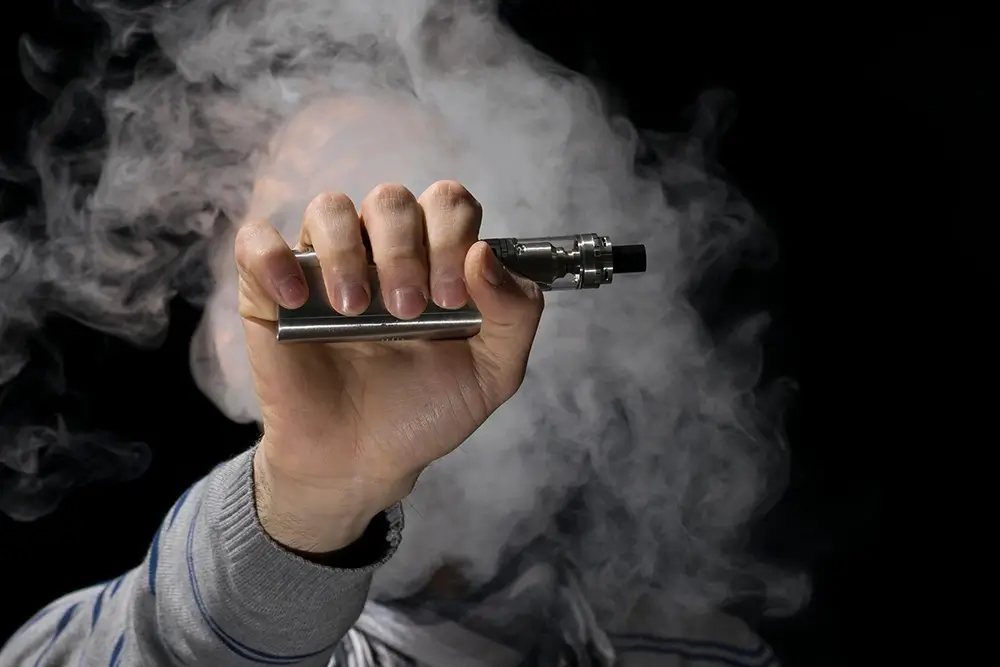In the intricate world of vaping, understanding the underlying chemistry and physics can provide valuable insights into how e-cigarettes function and the potential effects on the user. Let’s delve into the science behind vaping, exploring its chemical composition, the physics of vaporization, and the implications for both users and the environment.
The Chemistry of E-Liquids
E-liquids, the fundamental component of vaping, consist of a few key ingredients: propylene glycol (PG), vegetable glycerin (VG), flavorings, and nicotine (optional). Each ingredient plays a crucial role in the overall vaping experience.
Propylene Glycol (PG)
- PG is a colorless and odorless liquid known for its ability to carry flavor effectively.
- It has a thinner consistency compared to VG, making it ideal for producing throat hits similar to smoking traditional cigarettes.
- PG is generally recognized as safe by regulatory agencies when used in consumer products.
Vegetable Glycerin (VG)
- VG is a thicker, sweeter liquid that produces dense vapor clouds.
- It contributes to the smoothness of the vapor and enhances the sweetness of the flavorings.
- Like PG, VG is considered safe for consumption and is commonly found in various food and cosmetic products.
Flavorings
- Flavorings are responsible for the wide array of tastes available in e-liquids, ranging from fruity to dessert-inspired flavors.
- These flavorings are often food-grade and specifically formulated for vaping purposes.
- Some concerns have been raised about the potential risks associated with certain flavoring compounds, highlighting the importance of using high-quality ingredients and understanding their safety profiles.
Nicotine
- Nicotine, while optional, is a common component in e-liquids, particularly for users seeking to transition from smoking traditional cigarettes.
- It is an addictive substance found naturally in tobacco plants and can vary in concentration within e-liquids.
- Nicotine’s effects on the body are well-documented, with both short-term and long-term implications for health.
The Physics of Vaporization
Vaporization is the process by which e-liquids are transformed into inhalable vapor. This process relies on principles of physics, including heat transfer and phase transitions.
Heating Elements
- In most vaping devices, a heating element, often in the form of a coil, is responsible for heating the e-liquid to the point of vaporization.
- Coils are typically made from resistance wire, such as Kanthal, stainless steel, or nichrome, which heats up when an electrical current passes through it.
Temperature Control
- Some advanced vaping devices feature temperature control settings that allow users to precisely regulate the temperature of the coil.
- Temperature control can help prevent overheating of the e-liquid, resulting in a smoother and more consistent vaping experience.
Vapor Production
- When the e-liquid reaches the appropriate temperature, it undergoes a phase transition from liquid to vapor.
- The vapor is then inhaled by the user through the mouthpiece of the vaping device.
Implications and Considerations
While vaping offers an alternative to traditional smoking and has been touted as a harm reduction tool, there are still ongoing debates and research regarding its long-term health effects. Understanding the chemistry and physics of vaping can empower users to make informed decisions about their usage and advocate for responsible vaping practices.
In conclusion, the science of vaping encompasses a diverse range of disciplines, from chemistry to physics, all working together to create the vaping experience. By exploring these principles, users can gain a deeper appreciation for the technology behind their devices and make educated choices regarding their vaping habits.





